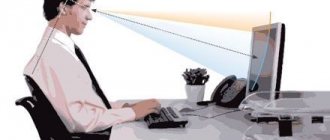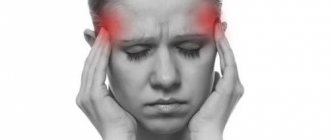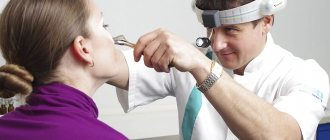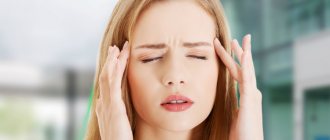Headache in the temple area bothers people of all ages. Some people experience headaches in the left temple or the right, while others suffer from pain in both temples. At the Yusupov Hospital, doctors first use a comprehensive examination to determine the cause of the headache in the temple. Treatment is prescribed depending on the type of pain.
Neurologists, therapists, and oncologists collectively establish a diagnosis and develop patient management tactics. Professors and doctors of the highest category use innovative methods of headache therapy. The medical staff is attentive to the wishes of patients. Psychotherapists provide support to patients with unstable emotional states.
The main causes of pain in the temples
Headache in the right or left temple can be caused by various reasons. It can have a pulsating, pressing character, and less often it can be cutting. A severe aching headache in the temple area often occurs in the morning, which forces the patient to wake up before the alarm clock.
Attacks of headaches in the temples come unexpectedly. If you have a headache in the temporal region, you should immediately contact a therapist at the Yusupov Hospital. He will conduct an initial examination and prescribe an examination. After receiving the research results, the therapist refers the patient to a neurologist, cardiologist or oncologist. If necessary, patients undergo a complex examination and receive consultations from leading specialists from partner clinics.
The most common cause of frequent headaches in the temples is considered to be pressure drop. Seizures can occur due to some disease. There are more than two hundred main causes that can cause headaches in the temples. The most common causes of temporal headaches include:
- disruption of the circulatory system;
- viral and bacterial diseases;
- age-related changes in the body;
- intoxication;
- trigeminal nerve entrapment;
- hormonal dysfunction;
- carious teeth.
It is worth noting that absolutely any pain that is felt in the facial area can provoke the appearance of temporal pain. The true cause of a headache is difficult to identify. Constant headaches in the temples and forehead often bother people who lead a busy lifestyle, get tired, and get little rest.
Causes of head and eye pain
So, why do our eyes and heads hurt? Let's try to find out the reasons for such ailments.
Overwork
Overwork is one of the most common causes of pain in the head and eyes. This condition occurs because during a hard day at work, a spasm occurs in the vessels of the shoulder girdle, which impairs blood circulation. The most painful feature of this disease is that the discomfort does not stop even after the cause of the discomfort is eliminated. To prevent this condition, get more rest, relax and try to reduce your exposure to stress and other mental disorders.
Migraine
This disease is characterized by pain in the head and eyes, which are clearly localized on one side (either the left or right side of the brain is affected), and have a paroxysmal nature.
Main symptoms of migraine:
- pain radiating to the temple, eyes and adjacent parts of the brain;
- impaired concentration;
- fear of light;
- vomiting or nausea.
This disease usually appears in people between 25 and 40 years of age and is more common in women. The frequency of migraine attacks can range from several times a day to two or three times a year.
Why does migraine occur?
Until now, doctors still do not know the exact cause of migraine, and there is no clear treatment for these attacks, so such patients should avoid stress, maintain a healthy lifestyle and systematically take painkillers prescribed by a specialist doctor.
Cluster pain
Such unpleasant sensations also have a paroxysmal nature and are somewhat similar to migraine attacks. During such an attack, one of the entire hemispheres of the brain is affected by very severe pain, focusing in the eyes and radiating to the temple, ear and neck.
The main symptoms of cluster pain (attacks):
- unilateral pain in the eyes, head and ears (left or right sides affected);
- high blood pressure;
- facial redness;
- burst blood vessels in the whites of the eyes.
These pains have been little studied; the attack itself can last quite a long time and cannot be treated with medication. A person suffers greatly from this illness, and all attempts to help or support are perceived negatively, sometimes with aggression. Therefore, the most effective method of treating cluster pain is peace and quiet of the patient.
Vegetative-vascular dystonia
This ailment is a common cause of pain in the temples and eyes. Unpleasant sensations arise, often one-sided, in the left or right hemisphere. The cause of such pain is usually excessive stress (both mental and physical), sudden changes in weather or chronic lack of sleep. In such cases, the doctor usually prescribes treatment with vascular drugs and additional procedures.
Atherosclerosis
This disease is associated with the appearance of cholesterol plaques in blood vessels. Such plaques appear due to a violation of lipid and protein metabolism; when this process starts, a seal begins to form in the vessel, which can gradually block the lumen of the vessel.
The appearance of such compactions in the vessels of the brain leads to headaches on one side, separately on the right or left. The presence of pain in one side or another depends on the location of the plaque - whether it is in the left or right hemisphere. But another picture is also possible, for example, the left side of your head hurts, and the plaque is in the right hemisphere and vice versa.
The main symptoms of atherosclerosis:
- unilateral pain in the head and eyes (right or left)
- decreased mental activity;
- mental disorders.
This ailment is more likely to affect people with kidney disease, diabetes and hypertension.
Temporal arteritis
This is another condition that causes sharp pain in either the left or right temple and also affects the eyeball. The cause of this disease is usually inflammation of the artery walls. This disease usually affects older people (over fifty years of age).
The main symptoms of temporal arteritis:
- pain in the eye and temple on one side (left or right);
- insomnia;
- weakness;
- elevated temperature.
If treatment is not started in a timely manner, there is a risk that the inflammation will begin to spread and cause eye diseases (conjunctivitis, iritis, etc.). Therefore, it is important to get treatment in a timely manner.
Infectious diseases
Such ailments can also cause pain in the eyes and temples, since during inflammation the entire face hurts: ears, throat, nose, eyes, as a result of which a feeling of discomfort may also be present in the left or right hemisphere of the brain.
Arterial hypertension (high blood pressure)
Unpleasant sensations in the temples and eyes with high blood pressure can be caused by stress, overwork or a sudden change in weather. Older people are more susceptible to this disease, but in recent years, arterial hypertension is increasingly common in young people.
Glaucoma
Redness of the eye with glaucoma
The main characteristic feature of this disease is a constant or periodic increase in pressure inside the eyes. In this case, the pain affects not only the eyes, but also the back of the head, and can also appear in the left or right hemisphere of the brain. Since the symptoms of glaucoma are nausea and weakness, it is often confused with migraine. Therefore, if you are not sure what exactly is bothering you, consult a doctor. If glaucoma treatment is not started on time, irreversible consequences are possible. Therefore, you should be examined by an ophthalmologist once a year to prevent the development of the disease in the early stages.
Meningitis
Another infectious disease, which is more severe than the previous ones, since the damage affects the meninges. Typically, pain during meningitis occurs in the eyes and temple, in the left or right hemisphere (only on one side), but if left untreated for a long time, radiating pain may begin, which will be felt in other parts of the head.
Main symptoms of meningitis:
- constant pain in the temples and eyes on one side (either the left or right side of the head is affected), which intensifies over time;
- chills;
- weakness;
- nausea;
- drowsiness.
Treatment is carried out strictly in a hospital setting and as prescribed by the attending physician. If this disease is not treated, such frivolity can even lead to death.
Oral diseases
Often, pain in the teeth can be accompanied by unpleasant sensations in the ears, temples, eyes, and also affect the left or right side of the brain.
Inflammation of the trigeminal nerve
Another cause of pain in the head and eyes may be this chronic disease. The causes of its occurrence are inflammation of the cranial nerve fibers, which occurs as a result of hypothermia of the face, compression of a nerve, or a brain tumor. Painful sensations are accompanied by attacks lasting up to two minutes, which are usually associated with certain actions (talking, yawning, chewing, etc.). Pain syndrome occurs in the temples and eyes on the right or left, and the head as a whole can also hurt.
Types of pain in the temples
Any headache in the temples and eyes is characterized by sharpness and suddenness. If the pain syndrome occurs due to overwork or emotional turmoil, the duration of a temporal headache can be 30 minutes or can last 24 hours. If a throbbing headache in the temples occurs in the morning, it can be assumed that its cause is vascular disorders. This pain is accompanied by general weakness, nausea, and tinnitus.
Headache in the temple area due to trauma can manifest itself in different ways: pulsation in the temples, movement of the source of pain from the temporal lobe to the occipital lobe. If appropriate measures are not taken, acute pain can become chronic.
For persistent headaches in the temples, the causes of which are unknown, doctors recommend that the patient keep a diary. It should note the number and nature of headaches and how they are relieved. Thanks to these records, it will be easier for a specialist to get a picture of the course of the disease.
Other Causes of Headaches During Eye Movements
- infectious and inflammatory diseases (flu, colds, meningitis);
- sinusitis, frontal sinusitis, which causes nasal congestion and compression of the eye muscles;
- allergic reactions leading to swelling;
- traumatic brain injuries;
- brain tumors.
You will not be able to establish one of these diagnoses on your own. However, if you have several symptoms of one of them, you should immediately make an appointment with a doctor. Most diseases require long-term treatment. If it is not started on time, complications and serious consequences can occur, including blindness.
MagazinLinz.ru team
How to get rid of pain in the head and temples
If a severe headache in the temples occurs at home, you can try to get rid of it without resorting to drug treatment. The choice of a method to reduce temporal pain should be approached carefully. You can do a head massage yourself. Find a comfortable position and start massaging your head with your fingertips. If a headache occurs in the right temple, start making massage movements on the right side of the head, if in the left - on the left. Then run your fingers all over your head, including the temporal, occipital, and frontal areas. When you finish the massage, remain in a relaxed state for a few minutes.
Temporal headaches may go away after taking a warm shower. The patient's blood circulation to the brain improves, which allows him to get rid of headaches. The bath relaxes, which will also help relieve pain. Walking in the fresh air for half an hour can reduce headaches in the temples, which are caused by migraines. If, after attempts, the headache in the temples does not go away, contact the Yusupov Hospital.
Diagnosis of pain in the head and eyes
If you notice any symptoms of the above diseases, you should immediately check with a doctor. The specialist, in turn, should try to determine the cause of the pain, first by conducting an examination for obvious signs of the disease. In the future, you will need to understand where the source of discomfort is located, in the left or right eye, or perhaps the blood vessels and the brain itself are affected. If the examination fails to identify the cause of the pain, the doctor will prescribe blood and urine tests, as well as other diagnostic procedures. For example, examination of the fundus, cornea, retina, measurement of intraocular pressure, CT and MRI.
We recommend watching a video about the causes of headaches:
Non-drug methods for treating temple headaches
Non-pharmacological treatment methods used by specialists at the Yusupov Hospital rehabilitation clinic are aimed at the main mechanisms involved in the formation of headaches. Among them, the leading ones are psychological factors (acute or chronic emotional stress), and muscle tension - myofascial, muscular-tonic, syndromes with the formation of trigger pain points.
The criteria for the use of non-drug treatments are:
- insufficient effectiveness of drug therapy;
- individual intolerance to drugs and or the occurrence of allergic manifestations when taking pharmacological agents;
- the patient’s tendency to become addicted and dependent when taking antidepressants and tranquilizers, which are widely used in the treatment of pain in the temporal region;
- development of abusive headaches with long-term use of analgesics in large doses;
- no contraindications to the use of non-pharmacological methods.
Pain is always a mental phenomenon. The longer and stronger the pain, the more often it is combined with anxious, depressive, hypochondriacal reactions, which can be primary or secondary. The duration and degree of pain affect the patient’s well-being and behavior. Under the influence of pain, personality traits, attitudes towards the world around us, ourselves, and the future change. Psychological correction carried out by rehabilitation clinic specialists is aimed at changing these negative influences, at the following points:
- improved personality functioning;
- correction of the patient’s experiences associated with the presence of constant long-term or paroxysmal recurring temporal headaches;
- elimination of existing emotional disorders.
Doctors at the Yusupov Hospital begin psychological correction from the very first conversation with the patient. The patient is given hope for improvement, anxiety is reduced, and he is encouraged to recover. In addition to an explanatory conversation, psychologists are in a state of hypnotic sleep.
Autogenic training includes:
- relaxation of skeletal muscles;
- regulation of regional heart rate, vascular tone, depth and frequency of breathing;
- mental relaxation through specially selected verbal formulas.
Breathing-relaxation therapy combines elements of mental and muscle relaxation with excursions of the chest in an inhalation-exhalation rhythm. Acupuncture is based on stimulation of strictly defined areas of the skin and subcutaneous tissue in the area of biologically active points. Postisometric relaxation is a technical type of manual therapy. It is used to induce muscle relaxation and pain relief.
Biofeedback is a method as close as possible to testing physiological functions. It differs from others by actively involving the patient himself in the treatment process. The method is based on biological control of physiological functions.
Light therapy is a method of exposure to bright white light. Through the retina, hypothalamus, and pineal gland, it affects circadian rhythms, the activity of melatonin receptors located outside the pineal gland, nonspecific brain systems, and changes endocrine, mental, and motor functions.
Drug treatment of temporal headaches
When choosing a treatment method for headaches in the temporal region, doctors at the Yusupov Hospital take into account the reason why it occurs. Treatment for tension headaches includes relief of painful episodes and preventative treatment.
In order to interrupt an attack of headache in the temples, simple analgesics and non-steroidal anti-inflammatory drugs are prescribed. Treatment with these drugs should be used when the frequency of attacks is no more than twice a week. The use of simple analgesics should not exceed 14 days per month. The use of any medications for pain relief is monitored by keeping a diary. In patients with chronic headaches and comorbid depression and anxiety, simple analgesics are usually ineffective, and excessive use of nonsteroidal anti-inflammatory drugs can lead to the development of drug dependence.
Patients are prescribed ibuprofen at a dose of 400 mg. It has the least potential to cause gastrointestinal complications. Frequent use of paracetamol in large doses can cause liver damage.
Preventive therapy is carried out for patients with chronic tension headaches. Antidepressants are most often used to prevent pain in the temples. Their effect is due to their own analgesic effect due to increased activity of descending analgesics. The analgesic effect of antidepressants occurs earlier than the antidepressant effect itself and when using smaller doses. The drug of first choice is amitriptyline. Other tricyclic and tetracyclic antidepressants, maprotiline, clomipramine, and mianserin, are also used.
For severe headaches in the temporal region, you can take a simple analgesic or ibuprofen. If the pain does not go away, seek specialized medical help by calling the Yusupov Hospital.
Optic disc swelling (papilloedema)
Papilloedema is accompanied by swelling of the optic nerve nipple, which results in the creation of pressure inside the eye and the development of pain.
The main cause of the pathology is increased intracranial pressure (intracranial hypertension). It is associated with many conditions, including head injuries and brain diseases.
Intracranial hypertension is observed with bleeding into the cranial cavity, including hemorrhagic stroke, subdural and epidural hematoma, subarachnoid hemorrhage. Hypertension can also be caused by brain infection (encephalitis, meningitis), abscesses, tumors, metastases and traumatic brain injuries.
Pain syndrome inside the eye with this pathology develops over several hours or appears periodically, intensifying and subsiding. The symptom is accompanied by blurred vision and headaches. The disease is characterized by a decrease in the severity of the clinical picture in the supine position and its intensification when coughing or sneezing.
The patient needs to contact an ophthalmologist as soon as possible and determine the root cause of the symptom.










